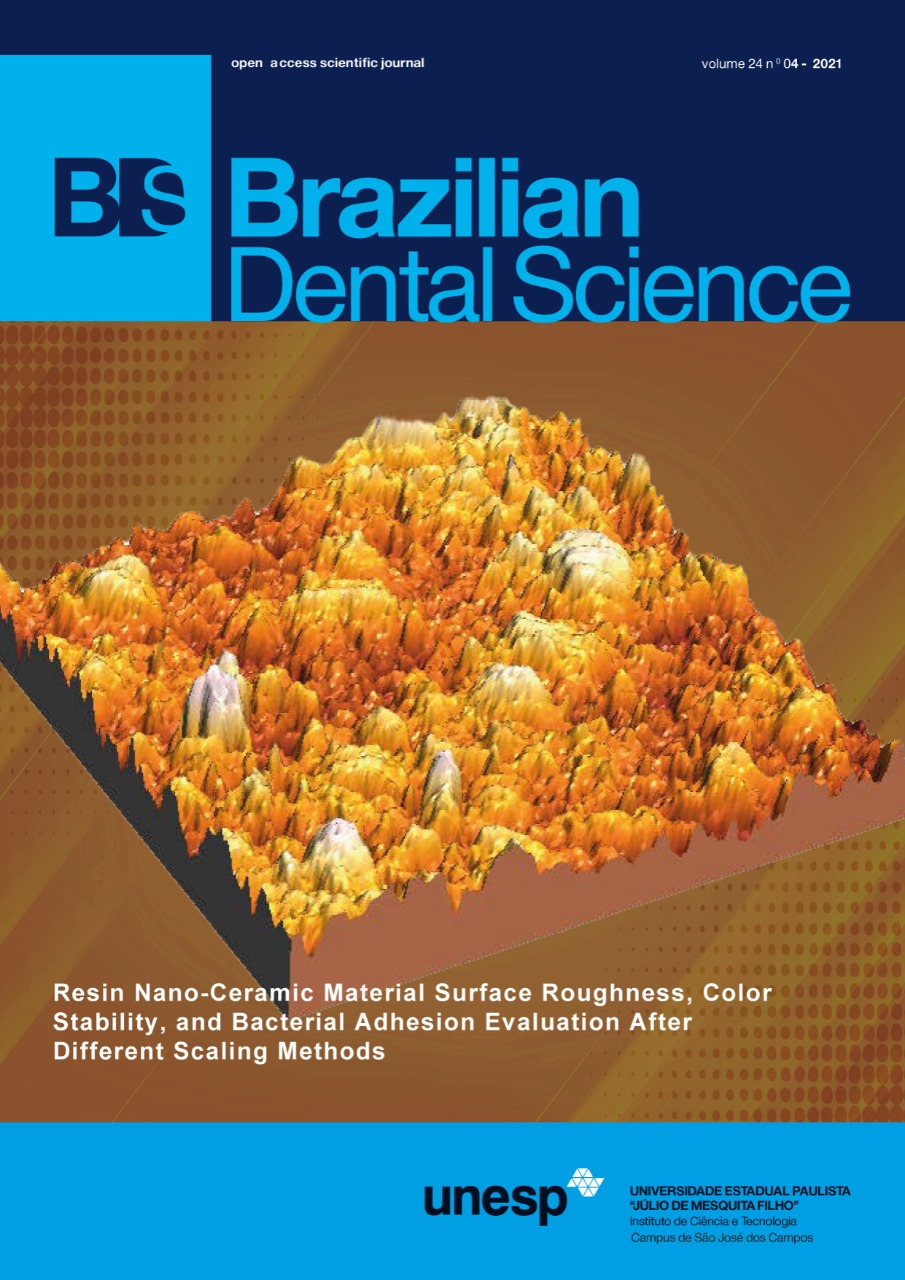Enamel Deproteinization: Will It Save The Shear Bond Strength For The Sake Of Preventing White Spot Lesions?
DOI:
https://doi.org/10.14295/bds.2021.v24i4.2581Abstract
Objective: This study attempted to investigate the effect of enamel deproteinization using citric acid, PEG 400 and NaOCL on the shear bond strength of orthodontic brackets to enamel using nano-silver modified resin for the prevention of white spot lesions. Material and Methods: 68 premolars were used in the study; nano-silver modified adhesive resin was used to bond orthodontic brackets to the enamel. Specimens were divided into 4 groups according to the applied surface treatment before bonding. Group I (control): acid etching with 37% phosphoric acid. Group II: deproteinization using 5.25% sodium hypochlorite (NaOCl) before acid etching. Group III:deproteinization using 10% citric acid before acid etching. Group IV:deproteinization using 5% polyethylene glycol (PEG 400) before acid etching. The specimens were then thermo- cycled for 6000 cycles. They were examined for surface roughness, shear bond strength and using electron microscope. electron microscope Results: In both surface roughness and shear bond strength tests, Group III (citric acid) showed the highest values, followed by Group II (sodium hypochlorite); (p < 0.001). The least values were shown for Groups I (control) and IV (PEG 400), with no statistically significant difference between them (p = 0.948). SEM revealed etching pattern type 1 and 2 in the citric acid group while PEG 400 showed shallower micro- porosities. Conclusions: Deproteinization of enamel using either NaOCl or citric acid increased the bond strength of nano-sliver modified resin to enamel, with citric acid showing greater increase in bond strength. Deproteinization using PEG 400 did not increase the bond strength.
Keywords
Deproteinization; Sodium hypochlorite; Citric acid; PEG 400; Nano- silver modified adhesives.
Downloads
Downloads
Published
How to Cite
Issue
Section
License
Brazilian Dental Science uses the Creative Commons (CC-BY 4.0) license, thus preserving the integrity of articles in an open access environment. The journal allows the author to retain publishing rights without restrictions.
=================




























